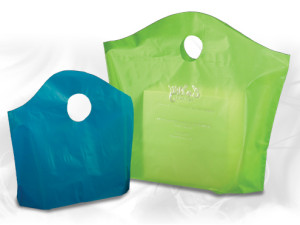By Splash Packaging TeamUncategorized
High Density Vs. Low Density Plastic: What’s The Difference?
If you are a newcomer to the packaging world, you probably haven’t heard the terms “high density” or “low density” plastic before. Or maybe you have heard these terms, and just don’t know quite what they mean. What people are commonly referring to is polyethylene plastic, which can have different structures and densities including high density, low density, medium density and some variations of those. Plastics are an extremely valuable asset in packaging, and the differences in composition are very important in their intended application.
Polyethylene Explained
Polyethylene is an extremely diverse packaging material; there are variations available for many types of packaging applications and it is surprisingly eco-friendly. Polyethylene can be soft and stretchy, or hard and strong. Basic characteristics of this material are insulation quality, resistance to corrosive materials, and overall strength.
The raw material used to make polyethylene is called naphtha, which is a product extracted from crude oil also known as petroleum. When the naphtha is heated, it produces ethylene which is then used to produce polyethylene. When ethylene is transformed into polyethylene it becomes a sort of liquid pulp, which is then cut into small pellets to be used as raw material by factories.
The density and liquidity of the polyethylene is determined during the production process, which determines what type of applications it will be used for. Factories use the polyethylene pellets to make plastic bags using large machines that heat the plastic and create a tubular shape from which bags are formed. The process is quite an innovation, and allows for plastic bags to be made efficiently and at a low cost.
High density polyethylene is produced at a low pressure, and results in straight and tightly packed branches. This makes it directionally strong, as the branches are only facing one direction. Low density polyethylene is produced at high pressure, and results in a looser crisscross pattern of the branches, which make the plastic much more elastic.
Environmental Impact
You may be wondering why polyethylene is considered environmentally friendly, especially with so many plastic bag bans and negative press around plastics. Less than 1% of the total crude oil and natural gas used per year is used to make polyethylene globally. The way it is produced is efficient, and has hardly any harmful emissions involved. Plus, most plastics are easily recycled, and the only issue with this is encouraging more people to recycle plastics whenever possible.
Recycled polyethylene can be melted down to make new products or can be used as fuel for power supplies. There are also new innovations being made in plastics constantly, and hopefully in the future we will be looking at even more environmentally friendly plastics. Polyethylene has enabled us to economize like we never could before, as the majority of consumer packaging is made from plastic materials.
Even through plastic bag bans, polyethylene remains an important component of packaging. Depending on your local bag ordinances, you may be able to classify plastic bags over 2.25mil in thickness as ‘reusable’ as well. People should be encouraged to reuse their plastic bags whenever possible and recycle them properly. See more information about proper recycling here.
Which Should you Choose?
When it comes time to choose what type of plastic bags to order for your business, you should consider the properties of each type of plastic bag. A large difference between these types of polyethylene are feeling and sound. High density polyethylene tends to be “crunchier” and more stiff feeling with little stretch. Low density polyethylene tends to be softer and quieter to the touch and is capable of more stretch. Both can have the strength and durability to hold a variety of items.
High Density Plastic Bags
The cheapest type of bag available is typically the grocery style plastic t-shirt bag. These are made from very thin high-density polyethylene, although they can still be quite strong. A bag like this is ideal for mass retailers, grocery stores, or convenience stores because they are inexpensive but durable.
A thicker high-density plastic bag can make a great restaurant takeout bag, as they are stronger and will not stretch or break while carrying heavy food items. For resorts, spas, and other retail a frosted high density bag will offer strength and style for heavier items. Heavier items will usually require a thicker type of high density plastic bag because they are much stronger and some have reinforced bottoms for extra protection.
Restaurant Wavetop Carryout Bags
Low Density Plastic Bags
For some retail stores a low density plastic bag may be ideal for clothing and accessories. Many clothing stores utilize low density plastic bags because the weight of light clothing will not put too much strain on the bag. Low density plastic bags are usually reinforced with an extra layer of plastic around the handle to prevent the handle from breaking.
Low density bags are a more aesthetically pleasing choice for retailers because they are softer and more luxurious feeling as opposed to high-density’s crunchy and rigid feeling.
 Low Density Super Gloss Plastic Bags
Low Density Super Gloss Plastic Bags
When deciding which type you want for your packaging, think about the customer’s experience with using the packaging. Packaging has a large effect on a customer’s opinions and experiences with your brand, so it is important to consider the full usage they will get out of your packaging.
Splash Packaging has a great selection of high and low density plastic bags, ranging from inexpensive thin bags to sturdy frosted tote bags. See our website for our full selection of plastic bags in many different colors, sizes, and densities. We label our plastic bags with density type, thickness, and environmental information to help you make informed choices about your packaging. You’ll find that many of our plastic bags are recyclable and/or reusable, and some are made with recycled content, making them eco-friendly at an affordable price.
If you are looking for custom packaging, our affiliate company Morgan Chaney offers post-printing on stock plastic bags, as well as full customization in higher quantities. Whatever your needs are, consider the plastic bag as your solution to better cost effective packaging.
Source for polyethylene information: http://www.plasticseurope.org/information-centre/education-portal/resources-room/abc-of-plastics/the-abc-of-polyethylene.aspx











Comment (1)
Luke Yancey Nov 03 2016 - 6:39 am
I’ve been hearing about polyethylene a lot lately. It is nice to know that large companies typically use it to create plastic bags and products. I found it cool that it can be made into different consistencies. It is also great that it is environmentally friendly.
Comments are closed.